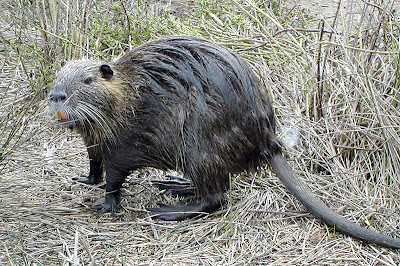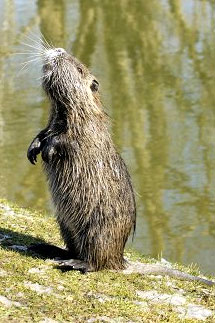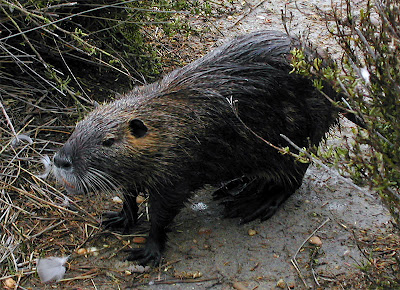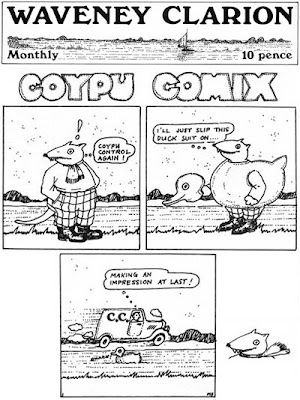Do you remember the Waveney coypu?
 When I was a young journalist in East Anglia in England in the late 1950s, I was fascinated by a story I worked on from time to time – the environmental battles associated with the growth and spread of the coypu, a large, herbivorous, semi-aquatic South American rodent that had become a rampant nuisance in the region.
When I was a young journalist in East Anglia in England in the late 1950s, I was fascinated by a story I worked on from time to time – the environmental battles associated with the growth and spread of the coypu, a large, herbivorous, semi-aquatic South American rodent that had become a rampant nuisance in the region.
I was actually quite startled the first time I saw one of these large (20 lbs.) “water rats” waddle across the road in front of me when I was going fishing with a Welsh colleague.
“What is it?” I asked, never having seen anything quite like it before. “Oh, that’s a coypu, there’s a lot of them in the wild around here,” replied my buddy, Glynn Gwilliam.
I watched it closely as it lurched across the road and slid nonchalantly into the waters of the Oulton Broad. It looked like a large fat-faced beaver, with a long straight, naked tail.
Oulton, where we were looking to harvest a fishy supper, was the most southerly of the Norfolk Broads, a series of man-made waterways which has proved to be very attractive boating and fishing holiday destination, but were an equally attractive living habitat for escaped and feral coypu, which became very numerous, very quickly.
The animals, native to temperate areas of South America – such as southern Brazil, Bolivia, Paraguay and Uruguay – had originally been introduced to this part of England by fur “farmers” in 1929.
By the time it was acknowledged that the rapid breeding of escaped coypu in the watery English countryside south of the Wash was a major issue, it took some 60 years before they were eventually “wiped out.”
The problem was the animal’s highly invasive burrowing and voracious feeding habits which created collapsed dykes and river banks, as well as the stripping and loss of such wetlands vegetation as marsh grass, the staple food of indigenous water rats and other wetlands creatures.
It took a 10-year eradication trapping program which was eventually declared a success in 1989 when no coypu had been trapped over a 21 month period.
That was about 29 years after I had departed East Anglia and wandered all over Canada, winding up in Kitimat.
Now I discover that the coypu, while eradicated where I first saw it, remains a problem in many North American states.
 Also known as the nutria, it was introduced throughout many locations in North America, Asia, Europe and Africa for meat or fur. A lot of these places experienced many of the same issues and problems that once plagued East Anglia.
Also known as the nutria, it was introduced throughout many locations in North America, Asia, Europe and Africa for meat or fur. A lot of these places experienced many of the same issues and problems that once plagued East Anglia.
Even today the coypu is listed as number five on America’s “least wanted” list of invasive foreign species. It was blamed for the loss of approximately 500 to 1,000 acres a year of Maryland’s Blackwater National Wildlife Refuge and, after decades of battling the intruder, Blackwater declared it eradicated in 2004.
But states like Florida, Georgia and even Washington, still have problems with populations of feral coypu and recent numerous sighting in the New Jersey wetlands have created concerns in that state and in southern New York State. The Louisiana Department of Wildlife still has a $5 a head bounty on coypu.
 Why did I get into these reminiscences and internet surfing about coypu or nutria? It was spurred by an item today on the BBC news site about the discovery in Uruguay of the fossilized skull of the largest rodent ever recorded.
Why did I get into these reminiscences and internet surfing about coypu or nutria? It was spurred by an item today on the BBC news site about the discovery in Uruguay of the fossilized skull of the largest rodent ever recorded.
This beast would have weighed a ton and been as big as a bull. It’s estimated that the herbivorous animal roamed the estuaries, marshes and forests some 2-4 million years ago. The artist’s rendition of the rodent looks a lot like a great big coypu.
I wonder what my reaction would have been if I’d seen one that size haul itself out of the water and waddle across the road in Oulton Broad?
Credit [email protected]
 Coypu Comix by Mick Sparksman
Coypu Comix by Mick Sparksman







